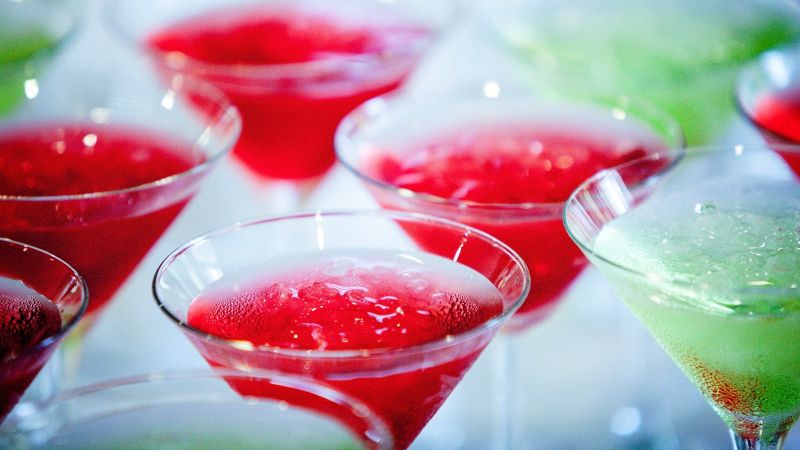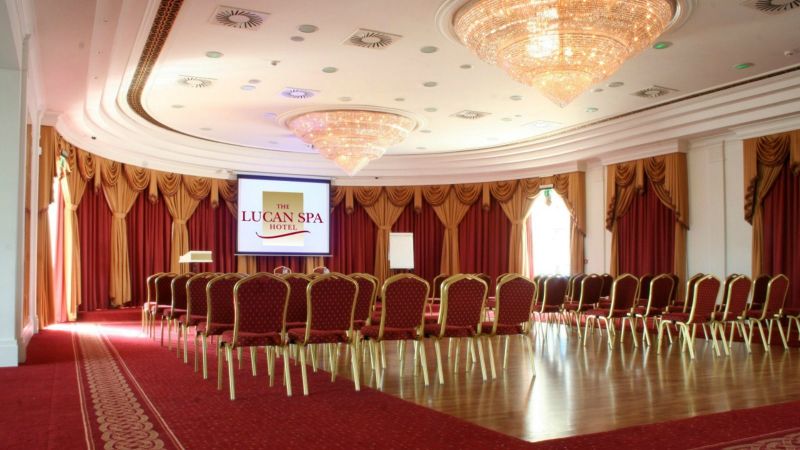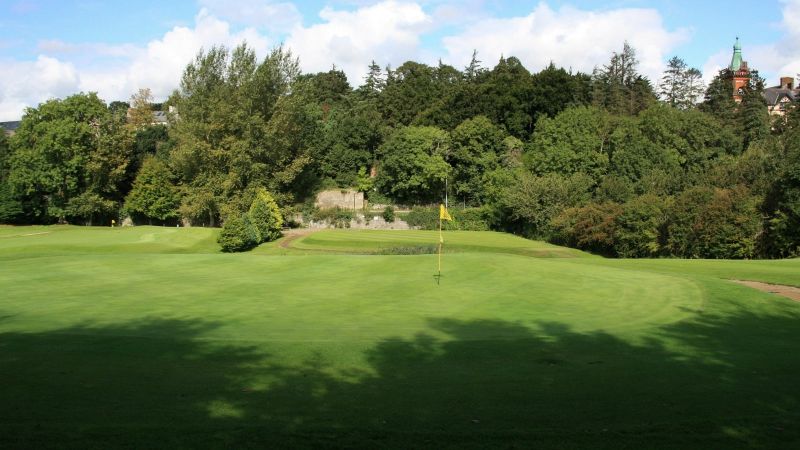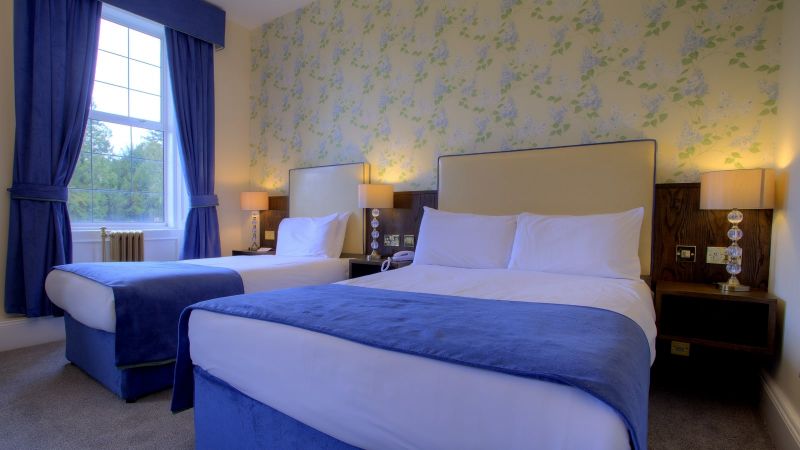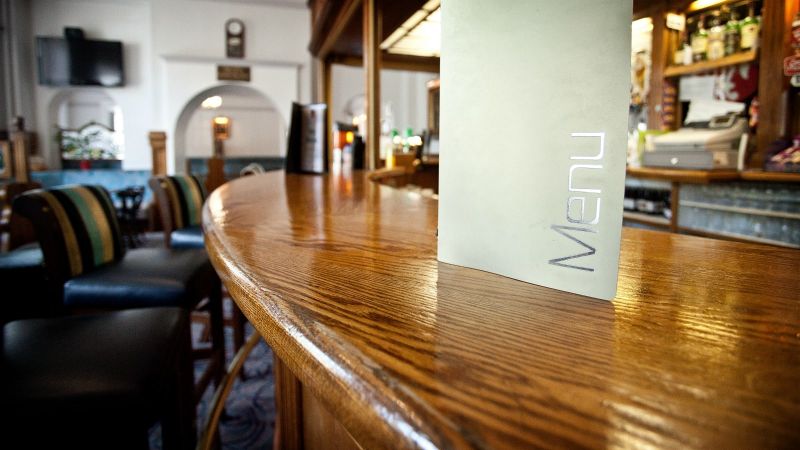History of Lucan Spa Hotel
Timeline Summary
1758: Iron Spa founded near lucan demesne.
1795: Original Hotel/Guesthouse (now Lucan County Bar) built.
1795 – 1840s: Hugely popular resort.
1850s: Popularity dwindled. County Bar building used as a schools for clergymen's Sons, as well as eventually becoming an asylum.
1883: Steam tram put in. Interest in the area returns.
1891: Lucan Spa Hotel built, using spring water pumped into hotel directly.
The beginnings of a guesthouse in Lucan
The Lucan Spa Hotel established itself as a health resort and opened for that purpose in 1758 on head of an iron spa being discovered nearby, on the lands of Agmondisham Vesey, a major landowner in Lucan Demesne. He built a wall around it to protect it from the Liffey flowing immediately nearby.
A fascinating account by John Rutty in his book “An essay towards a natural history of the county of Dublin” (1772) refers to the physical and medicinal qualities of the Lucan water: “It may be smelt at the distance of many yards, especially in frosty weather, or in rainy weather. It is limpid, and in the well has a bluish cast, and throws up a white bluish foum [sic] to the surface …having the flavour of a boiled egg, and when strongest, of a semi putrid egg”.
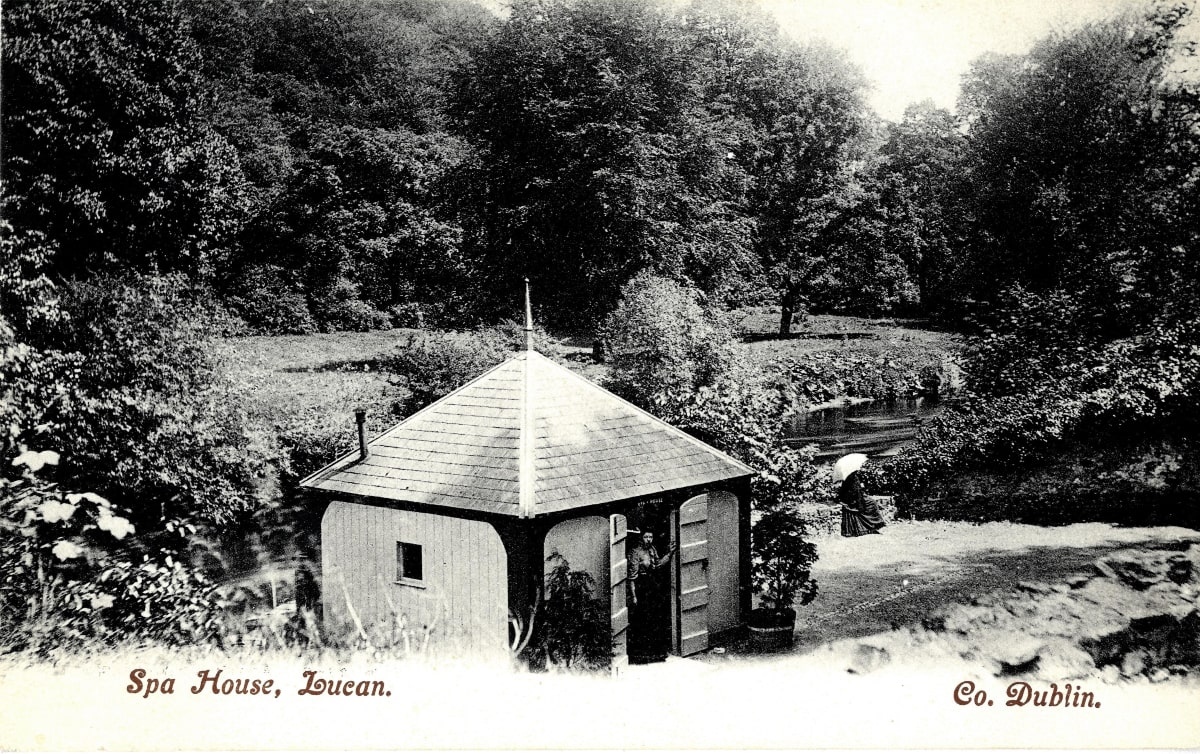 Source: South Dublin Libraries.
Source: South Dublin Libraries.
Because of the health-giving and invigorating character of the waters containing carbonate of lime and sulphurated nitrogen gas, the hotel became a favourite attraction for the middle classes of Dublin and beyond.
The spa became famous, attracting invalids to take the waters. Rutty’s book states that the waters were effective in the treatment of mild Leprosy, Impetigo, Herpes, “Eruptions on the skin” and Tuberculosis of the lymphatic system among many more. Reading his many accounts of almost miraculous cures, there seems to have been almost no condition the Lucan Water couldn’t cure.
Lucan flourished as a consequence and a guest house featuring a restaurant and ballroom was built nearby (now the Lucan County Bar building) testified to the popularity of the spa, leading to dancing and associated merriment. Indeed, an attractive terrace of houses was built nearby to accommodate those not availing of the hotel itself.
 Source: South Dublin Libraries.
Source: South Dublin Libraries.
These, a series of nine semi-detached, three-bay, two-storey, over-basement houses, were built round 1790 and designated ‘The Crescent’. They are still in existence today and are privately owned.
The Crescent
The Crescent, in the townland of Doddsborough, was built in about 1790 to cater for the guests of the Lucan Spa resort, along with the nearby Lucan Spa Hotel, now the Lucan County restaurant. This lovely terrace of Georgian houses is reminiscent of similar houses in English spa resorts and is still well maintained by its present occupants. Though the resort itself had ceased by the 1850's, not to return till later in that century, the houses were still in use and clearly marked on Griffith's 1852 map. Some of the occupants at the time included Catherine Baker, John Smith, Elizabeth Geoghan, Charlotte Collins, Doctor Stewart (he of Palmerstown Hospital fame) and Catherine Mansfield.
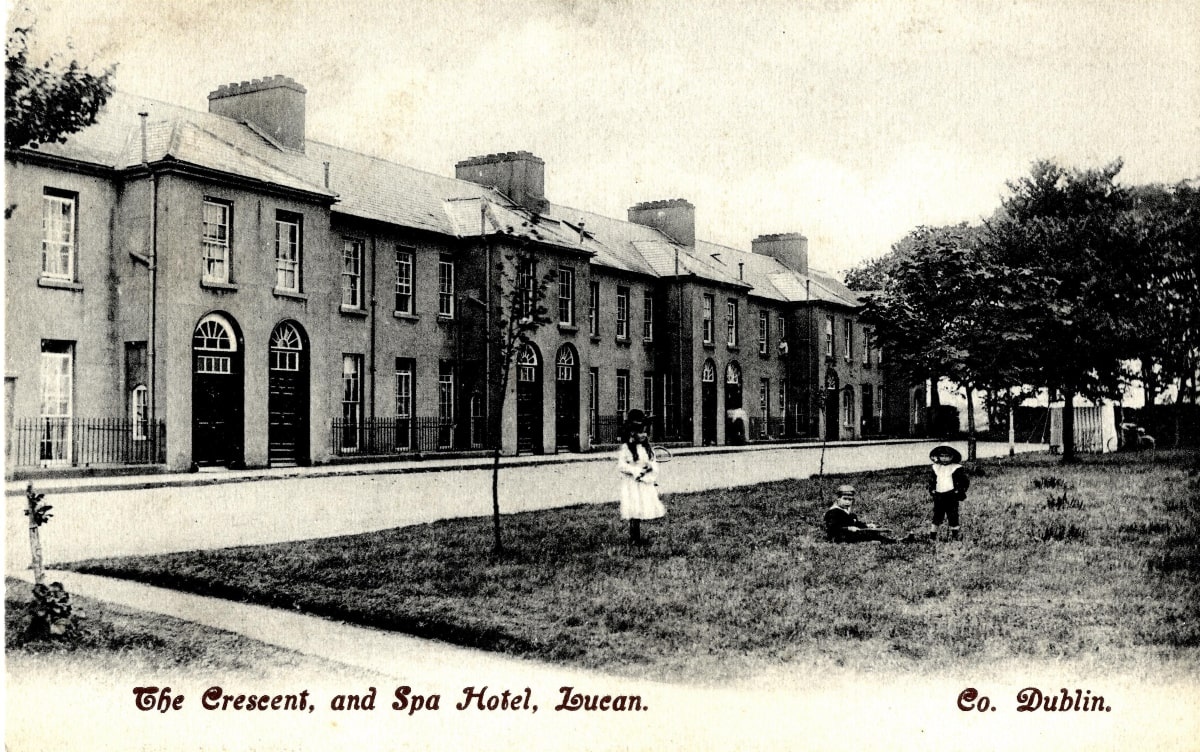 Source: South Dublin Libraries.
Source: South Dublin Libraries.
Closure of the Guesthouse and Subsequent Various Uses
By the mid-19th Century, however, the spa at Lucan had been upstaged by other spas located nearer to Dublin, and the guesthouse closed its doors to the fashionable taking the waters. It is reported that for some time later it became a school for clergymen’s sons, but this use did not continue for long.
In 1856, Henry Hutchinson Stewart (who Stewart’s Hospital at Palmerstown is named) gained possession of the old, and by now disused, former guesthouse in Lucan. He removed some of the long-stay neglected mental patients from the House of Industry to the old hotel. Later he handed it over to a committee whose aim was to cater for and train mentally handicapped persons, and he made generous financial provision for its maintenance (you can read more about this here).
Re-emergence of Lucan
The Great Southern & Western Railway came to Lucan South in 1846. The station was located in Lucan South near Finnstown.
In June 1881, the Dublin and Lucan Steam Tramway (DLST) opened for business. Despite its name, initially the route only went from Conyngham Road (12 yards from the end of the Dublin City tramways line) to Chapelizod. In November that year the route extended to Palmerstown. Only after two more years had elapsed did the service finally extend to Lucan.
The advent of the Lucan Steam Tramway made the Lucan Spa more popular than ever, with increased accessibility making it easy for the population of Greater Dublin to “take the waters”.
The Lucan Spa Hotel
The Irish Builders, on the 1st September 1891, reported that a new hotel was to be built on the site, where it still stands today. The Lucan County Bar served as the restaurant for the Hotel, while the residents stayed in the main part of the hotel.
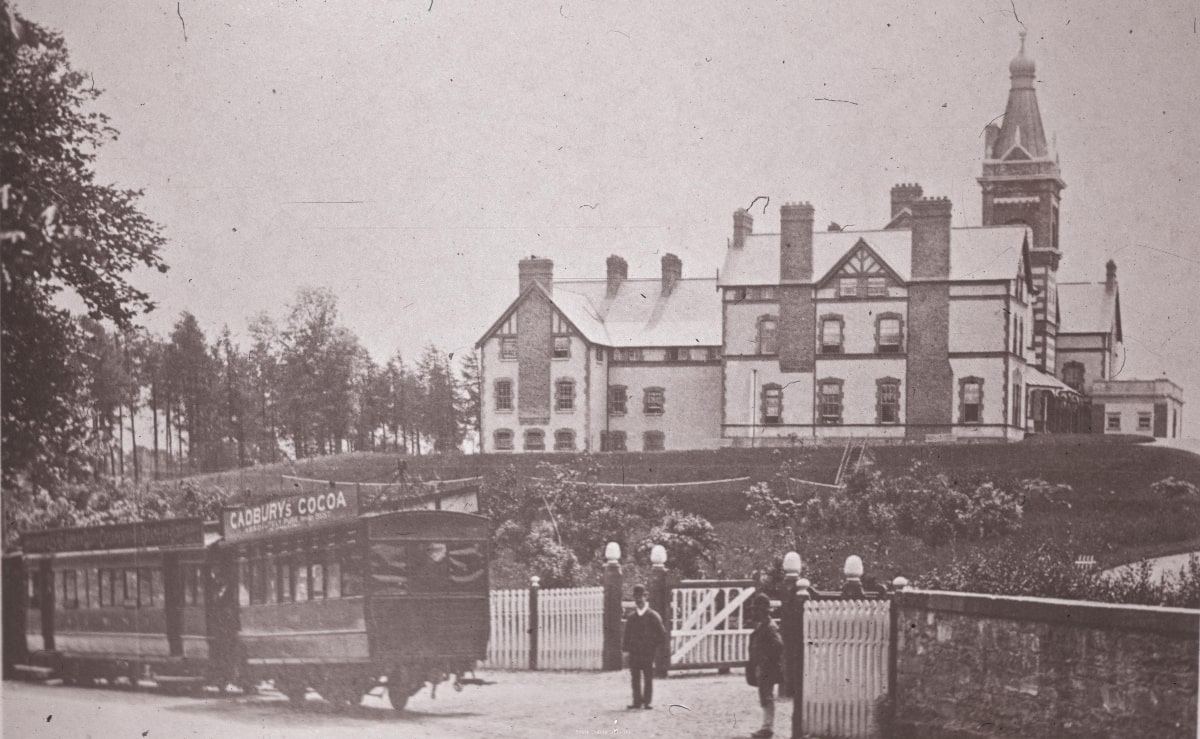 Source: South Dublin Libraries.
Source: South Dublin Libraries.
By the late 1910s/early 1920s, the hotel added a spa/baths room, where the water from the natural iron spa was pumped at high pressure to the hotel allowing guests to enjoy a number of spa treatments. This room was known as the Pump Room and is now the location of our Boyne Suite.
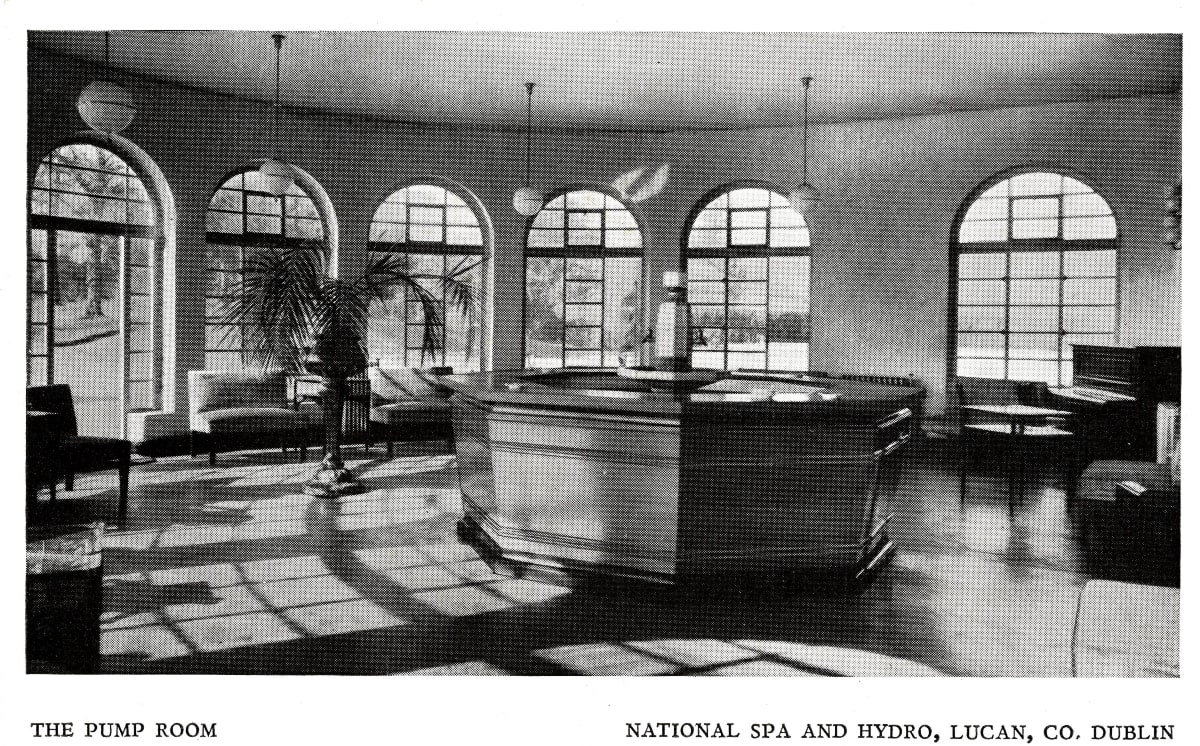 Source: South Dublin Libraries.
Source: South Dublin Libraries.
The Lucan Spa Hotel remained popular into the 1900's but with the invention of the motor vehicle and the eventual loss of the tram service (see brief overview below), people looked further afield for their entertainment and as a result, the hotel lost its appeal as a major social and entertainment hub. The popularity of the spa treatments at the hotel declined and eventually the spa/baths room at the hotel was converted to a ballroom as the hotel focused on establishing itself as a major venue in greater Dublin for dances and private events (especially wedding receptions).
 Source: South Dublin Libraries.
Source: South Dublin Libraries.
Ireland's Own Champion - Mike McTigue
St. Patrick's Day 1923 was the date for a major sporting occasion in Dublin. Light heavyweight boxing champion "the Battling Siki" came to Dublin to defend his belt against Ireland's own Mike McTigue (based in USA but originally from County Clare). This event was one of the very first international sporting occasions hosted by Ireland under the new Irish Free State. The fight took place in the La Scala Theatre in Dublin city and was the last 20-round boxing title fight to be held in the world.
Siki's party chose the Claremont Hotel as his base when arriving to Ireland on 5th March 1923. McTigue, on the other hand, chose the leafy surroundings of Lucan Spa Hotel to base himself on the week before the fight. Here, he finished his training camp in preparation for the fight and carried out his media obligations (as seen in the video below) to the highly anticipated fight. McTigue, a stone lighter than his much larger opponent, not only lasted the full rounds, but proved himself a class above his Senegalese opponent and was declared the winner to much jubilation.
Story of St Catherine's Well
Many years ago some English visitors were staying in the Spa Hotel, Lucan. They heard about the well and they thought it would be nice to visit it and bring back some water. They reached the well safely and they brought back some water in bottles. Just as they were about to return to the hotel one of them suggested it would not be a bad plan to bring back the image of the head of
St. Catherine that was over the well, to show to their relatives and friends in England. They brought it back to the hotel and the man who made the suggestion took charge of it. Some days later they returned to their native land. But the head of the Saint haunted the man day and night even when he was in his office at work. In the day time he could always see the head in front of him. He became frightened and brought the head back to Ireland. The people of St. Catherine’s were very pleased, they said the head had always been over the well. It is to be seen there to the present day.
Lucan Steam Tramway overview
1900 saw the electrification of the Lucan Steam Tramway and its renaming to “The Dublin and Lucan Electric Railway Company” (D&LER). Sixteen years later, during the Rising in Dublin, the D&LER was the only public transport system running during the insurrection. However, as time went on, the increasing popularity of the motor bus, together with the Civil War in 1922 conspired to sound the death knell for the Lucan line. The D&LER became bankrupt in 1925 when negotiations with the GSR to purchase the Lucan line came to naught. It briefly reopened in 1928 under the auspices of the Dublin United Tramway Company who re-gauged the tracks and ran the Dublin City trams on the line as far as Lucan, but the latest incarnation was shortlived. In 1940, one of the last vestiges of the once great Lucan Tram service were erased when Dublin City Council removed the Lucan tram lines and reinstated the roadway. However, one of the nine trams built in Spa Road Inchicore for the 1928 reopening (number 253) lived on as a sewing classroom and, later, sleeping accommodation (with four self-contained bedrooms) at St. Joseph's Convent, Tivoli Road, Dún Laoghaire. It may be seen today in the National Transport Museum in Howth.
Colgan Family Ownership
In 1958, Mr. Frank Colgan Senior bought the hotel from the Duggan Family. The Colgan Family still own and run the hotel today. In 1963, the family bought a private residence from the Harty Family in Chapelizod and had it converted into the West County Hotel soon after.
In 1977, a serious fire destroyed the Lucan Spa Hotel which led to the construction of the Earl Bistro and Bar, the Limerick Room and the new wing of bedrooms.
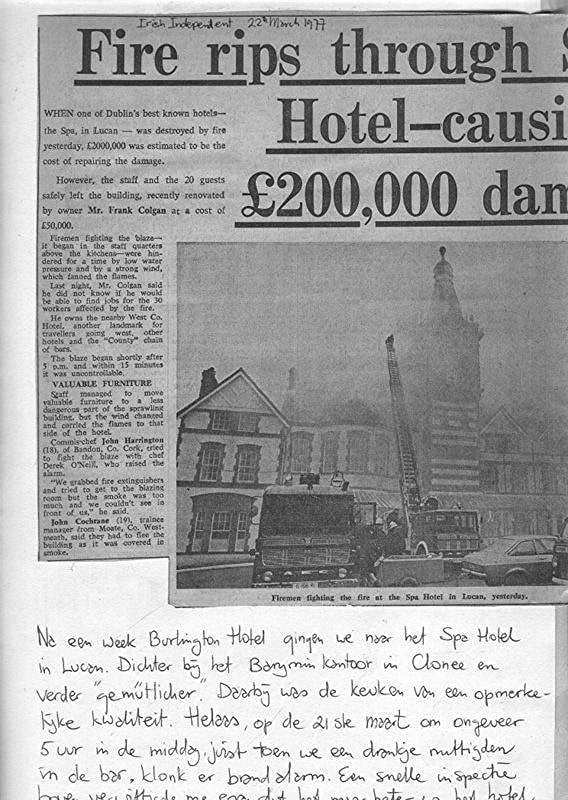 Source: Own Records.
Source: Own Records.
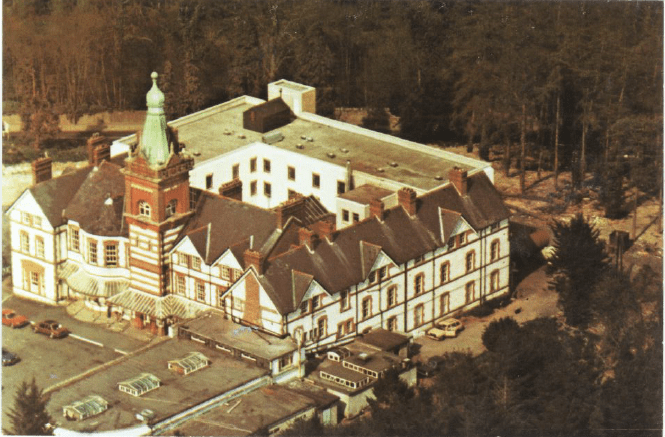
In 2008, redevelopment of the Boyne Suite (the original spa/bath room) took place, along with major construction work on the exterior car parking and gardens. This development has transformed Lucan Spa Hotel into one of Ireland's Premier Wedding and Conference Venues.
.png)

